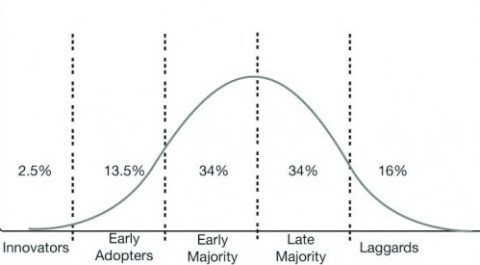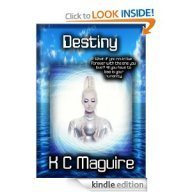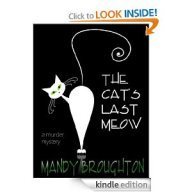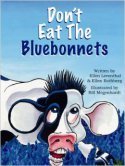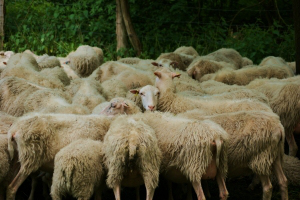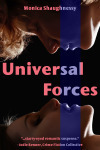Monica Shaughnessy's Blog, page 7
January 12, 2014
Deconstructing Downton Abbey – Lessons from the Hit Show
 The first time I heard about Downton Abbey was a little over a year ago. We’d gone out to eat with my father and stepmother, and they waxed poetic about the show for a good part of the meal. They’d been followers since its inception, and Season 3 was at hand. I’d read an interview with Julian Fellowes, its writer, in Writer’s Digest earlier that week, and my husband had heard an interview with some of the cast members on his way to work that morning. But it was the personal recommendation from my father that spurred me to action.
The first time I heard about Downton Abbey was a little over a year ago. We’d gone out to eat with my father and stepmother, and they waxed poetic about the show for a good part of the meal. They’d been followers since its inception, and Season 3 was at hand. I’d read an interview with Julian Fellowes, its writer, in Writer’s Digest earlier that week, and my husband had heard an interview with some of the cast members on his way to work that morning. But it was the personal recommendation from my father that spurred me to action.
I have to tell you, I was skeptical. PBS? Um, okay. A historical? Dustier than the Sahara. Masterpiece Theater? Zzzzz….
Despite my reservation, my husband and I decided to give Downton Abbey a try that weekend. Rent one episode–starting with Season One–just to see what all the hoopla was about. Just. One. Episode.
Little did I know, Downton Abbey is televised crack.
That night, we stayed up until 1 a.m. watching back-to-back episodes we bought off Apple TV for a hefty chunk of change. It was that good. Even my husband, a man who worships Will Farrell comedies, loved the show. We were hooked from the opening scene. I then began to see a number of books in bookstores with a decidedly Downton theme. Big pub had noticed the cult hit as well.
Cycle forward a year… , Downton Abbey cookies, Downton Abbey Puzzles – the list goes on. And just this week, a friend of mine asked if any of us watched Downton Abbey. If it was worth the bother. You already know my answer, don’t you?
So what, as writers, can we learn from Downton Abbey? Let’s take a look…
Lesson #1: Write for a “modern” audience.
Julian Fellowes is a genius, folks, and he “gets” the modern viewing audience. In the Writer’s Digest article, he said that today’s media consumer has a shorter attention span than ever before. So he packs a lot of scenes in each episode, making each one very short so we don’t linger too long on any one character. And there are lots of characters. Even if you haven’t seen a show, one look at the promo poster tells you as much. While the show carries weight in many other departments (setting, social commentary, costumes, witty dialogue, etc.), it’s the short, punchy, emotionally-charged scenes paired with a cast of well-drawn, fully dimensional characters that, in my opinion, makes the show such a success. A thinking man’s soap opera, if you will.
Writing for the modern audience can and should be its own post. But here’s my takeaway: when writing a book, the plot should move, baby, at the speed of sound, and the characters should be so real that the reader forms a relationship with them. Yes, yes, yes – most of you will say that you’re doing this already. But are you really? How long are your chapters? How deep are your characters? How many plates are you spinning in the air at once? Whatever you’re doing, double it or triple it, and you may come close to Julian Fellowes. But here’s a caveat: things that work on TV don’t always work in books. I think too many characters and too many plot lines can be detrimental to a book’s success. It’s easier to keep up with a hundred tangents in a visual medium stretched out over four or five seasons than in a written work.
Lesson #2: Word of mouth is king, but a smart marketing plan is queen.
The folks behind Downton Abbey cranked up that marketing/PR machine last year just in time for Season Three. Radio interviews, magazine articles, print ads, etc. Yet it was my father’s recommendation that actually drove me to action. But understand this: had my husband and I not been exposed, at least marginally, to the concept of the show beforehand, word of mouth may not have been as effective. It was the one-two punch of marketing plus recommendation in a short time frame that got us to the television. Concentrated exposure (and a handful of supportive readers) can work wonders.
Lesson #3: A series (or book) may take time to gather steam.
I’ve got Book One of a series out now (Doom & Gloom). And while it did well (tons of great blog reviews!), you’re not reading about me on the cover of Writer’s Digest. Yet Downton Abbey gives me hope. For the first two seasons, I didn’t even hear about the show. Not even on my radar. Now it’s my “don’t miss” event every week. And look at my friend, the one I mentioned in the intro. Despite the marketing storm last year, it took a marketing flood this year to reach her. Not sure whether she’ll like the show, but I bet she’s going to watch it tonight. Media is not immune to the “early adopter” bell curve, so think about your book or series in these terms.
(Everett M. Rogers in Diffusion of Innovations)
With regard to Downton, my father would be an early adopter (or innovator), I would be in the early majority, and my friend would be in the late majority. For its final season next year, there will be many laggards yet to come. Sometimes these cycles happen quickly, and sometimes they happen over several years. You never know when success may strike. For Downton, it happened mid-series.
If you haven’t watched an episode of Downton Abbey, I urge you to do so, if only for the lessons it provides. Marvel at the writing, the characters, the zippy plot and let them inspire you. To the other millions of viewers who’ve already joined the Downton cult, I leave you with this:
——————————–>
Your turn, Downton fans. What do you think about my analysis? Have any other insight from the show that may help fellow writers? I’d love to hear your thoughts!


December 24, 2013
It’s Not Christmas Without Books
The thrill of the ebook load, the delightful crack of a book’s spine, the comfort in knowing your winter nights will be filled for days or weeks to come…is there anything better than getting a book for the holidays?
Yes, giving them.
In honor of this, I’ve repurposed Clement C. Moore’s famous poem, “A Visit From St. Nicholas,” for book lovers:
Twas the night before Christmas, when all through the house
Not a reader was stirring, not even a mouse;
The iPads were set by the chimney with care,
In hopes that St. Nicholas soon would tap there;
The children were nestled all snug in their beds;
While visions of downloads danced in their heads;
And mom with her Kindle, and I with my Nook,
Had just settled in to read a good book,
When out on the lawn there arose such a clatter,
I tossed my ereader to see what was the matter.
Away to the window I flew like a flash,
Tore open the shutters and threw up the sash.
The moon on the breast of the new-fallen snow,
Gave a no-glare backlight to objects below,
When what to my wondering eyes did appear,
But a miniature sleigh and eight tiny rein-deer,
With a little old driver so lively and quick,
I knew in a moment he must be St. Nick.
More rapid than 1-Click his coursers they came,
And he whistled, and shouted, and called them by name:
“Now, Dasher! now, Dancer! now Prancer and Vixen!
On, Comet! on, Cupid! on, Donder and Blixen!
To the top of the porch! to the top of the wall!
Now dash away! dash away! dash away all!”
As tomes in a frenzied Black Friday Sale fly,
When they meet with a markdown and customers buy;
So up to the housetop the coursers they flew
With the sleigh full of books, and St. Nicholas too—
And then, in a twinkling, I heard on the roof
The prancing and pawing of each little hoof.
As I picked up my Nook, and was turning around,
Down the chimney St. Nicholas came with a bound.
He was dressed all in fur, it could’ve been mink,
And his boots were as black as the darkest e-ink;
A bundle of bestsellers he had flung on his back,
And he looked like an author just opening his pack.
His eyes—how they twinkled! his dimples, how merry!
His cheeks were like roses, his nose like a cherry!
The hair on his head had receded with age,
But the beard on his chin was as white as a page;
The crease in his forehead gave me this thought:
He’d pondered and read all the books that he’d brought;
He had a broad face and a little round belly
That shook when he laughed, like a bowl full of jelly.
He was chubby and plump, a right jolly old elf,
And I laughed when I saw him, in spite of myself;
The novels he left with a measure of cheer
Soon gave me to know I had nothing to fear;
He spoke not a word, but went straight to his work,
And filled my kids’ iPads like a B&N clerk,
After swiping his finger across all our screens,
He rose up the chimney without any means;
He sprang to his sleigh, to his team gave a whistle,
And away they all flew like the down of a thistle.
But I heard him exclaim, ere he drove out of sight—
“Happy Bookmas to all, and to all a good night!”
In the spirit of Christmas, I’d like to showcase books from my indie/small press author friends in the hopes that you’ll spread holiday cheer farther and wider. The first three are ebooks and will download in a twinkling. The last is a hardcover, but worth the wait.
Happy Bookmas to all, and to all a good night!
December 20, 2013
The Curse of Creativity
Let me tell you a little secret, one I learned myself not too long ago. The key to success, apparently, is putting out a product that looks like everyone else’s. Heresy, you say?
First, I submit the mind-numbing post on Slate, Inside the Box. The article asserts that people are generally uncomfortable with those who think “outside the box.” Here’s an excerpt:
We are taught that our own creativity will be celebrated as well, and that if we have good ideas, we will succeed.
It’s all a lie. This is the thing about creativity that is rarely acknowledged: Most people don’t actually like it. Studies confirm what many creative people have suspected all along: People are biased against creative thinking, despite all of their insistence otherwise.
“We think of creative people in a heroic manner, and we celebrate them, but the thing we celebrate is the after-effect,” says Barry Staw, a researcher at the University of California–Berkeley business school who specializes in creativity.
Staw says most people are risk-averse. He refers to them as satisfiers. “As much as we celebrate independence in Western cultures, there is an awful lot of pressure to conform,” he says. Satisfiers avoid stirring things up, even if it means forsaking the truth or rejecting a good idea.
Then there’s the article on The Book Designer, by C.S. Lakin. While the piece mostly explores whether or not platform is crucial to an author’s success, it also highlights the benefits of conforming. Read on…
Because although my books were getting terrific reviews and winning awards, they were not strict genre novels—in fact many of my books are a bit experimental and can’t be easily categorized. My books just weren’t selling much.
With indie publishing, authors like me have been able to publish our “unusual” or “different” novels and find readers. But after I’d put out five novels as ebooks (and some also in print), and did extensive marketing and promotion (spending an outrageous amount of money on publicity, for example)—following to the letter all the sage advice I’d garnered on how to sell for success, nothing worked. My author friends were making easily five figures each month, often off one title, or they would release a book and it would hit the best-seller lists off the bat.
Then she tells us what she did to break out…
I chose one novel to deconstruct. [NOTE PLEASE: I did not plagiarize or copy the plot, writing, or tried to mimic this author. I just deconstructedthe structure. If you don’t know what that involves, buy my book when it comes out!]
After deconstructing the novel, I plotted and constructed mine.
I hired the same cover designer to brand my look for my series.
While writing the novel, I copied and pasted 30 Amazon descriptions of books in this genre in order to create my own in the same style and fashion. [NOTE: This was a genre I had never even read, so had no clue how this differed from the genres I already wrote in.]
And now, she’s selling 30 to 50 books a day. Coincidence? I think not.
The arguments against creativity are pretty damning. Before “The Hunger Games,” there was the dystopian “Brave New World” by Aldous Huxley, written in 1932. Before Harry Potter, there were wizarding novels by Ursula K. Le Guin and before that, waaaay before that, a man named George MacDonald wrote a book in 1858 called “Phantastes“–the first fantasy book ever. Tellingly, “Brave New World” was a critical, but not popular success when first published. ”Phantastes” got “some notice” (even inspiring CS Lewis) but MacDonald’s greatest success came with his realistic fiction.
Now, let’s look at another man who pioneered not only the first science fiction book, but also the first detective story: Edgar Allan Poe. Even after the success of “The Unparalled Adventure of One Hans Pfaall” (science fiction) and “The Murders in the Rue Morgue” (detective story) in magazines of the day, Poe remained desperately poor for most of his life. It wasn’t until 1908–nearly 60 years after his death–that these works were collected into “Tales of Mystery and Imagination” and widely published to a large audience. People the world over recognized his genius; they just didn’t want to pay him a living wage to create it. Sad. Very sad.
So should the truly creative among us cease and desist? No, of course not. Just realize that some ideas take longer to embrace than others. Besides, I don’t believe creativity is something that can be turned off and on like a light switch. If you’re a mad genius, can you really live any other way? (P.S. – while I don’t consider myself a mad genius, my creativity definitely strays into the margins)
If you’re writing solid, middle-of-the-road genre books, thank your lucky stars that someone else took those first knocks to their career. And if you’re writing quirky cross-genre books that defy conventional logic, don’t worry too much about success. History dictates it will come after you’re dead.
————————>
Wow. That was a heavy post. I promise my next one will be lighter, just in time for the holidays.
Anyone care to comment on the curse of creativity? Agree with me? Disagree? I welcome all comments.


December 3, 2013
Book Marketing through the Holidays
 Most of you know that a writer’s biggest obstacle to success is discoverability. To overcome this, I’ve been doing quite a bit–with mixed results. Here are my efforts, in no particular order:
Most of you know that a writer’s biggest obstacle to success is discoverability. To overcome this, I’ve been doing quite a bit–with mixed results. Here are my efforts, in no particular order:
99 Cent Sale: I ran a 99 cent sale for Season of Lies in November during the start of hunting season (it’s a hunting-themed thriller). While there are tons of “free listing” sites, the 99 cent sale sites aren’t as plentiful. I submitted to two or three of them, including eReader News Today and Pixel of Ink, but wasn’t one of the lucky few picked up–the competition is fierce. In order to “secure” a listing, you have to pay many of these sites. Yet at 30 cents’ margin, you may not even break even. I also tweeted and blogged about the sale, had my friends tweet and FB, etc., but to no avail. Bottom line: if no one knows about the sale, then no one buys. If I publish a new book in a similar genre that brings a lot of customer traffic to my author page, I may try it again. But doing a sale out of the blue? No. Result: Not Worth Repeating (unless I bring my *own* traffic)
Customer Reviews: This is a biggie. Season of Lies has 25 reviews and a 4 star rating. I’ve read that Amazon algorithms kick in at 25 reviews, and they help promote your book at this point, recommending it to readers. From what I’ve seen, this is likely true because the book continues to sell (though sporadically) without too much effort on my part. (but not during the stinking 99 cent sale!) As for putting a link in the back of my books asking for reviews? Hasn’t made much of a difference as far as I can tell. I’ve reached out to a few Vine Reviewers. But they, along with the rest of the blogosphere, are inundated and taking fewer and fewer requests. Result: Worth Repeating (but difficult to achieve)
Book Reviews: I’ve gotten several book reviewers to write about Doom & Gloom. The most recent posting was a week or two ago (at this writing). The results? Little to no movement in sales. But I will still continue to solicit book reviewers for their in-depth opinions. Why? Because I believe it increases the number of times a potential customer sees your book, and it lends credibility to me, as an author. The only drawback is that most bloggers have a TBR pile the size of Mount Rushmore. Result: Worth Repeating (but long lead times exist)
Google Adwords: OMG. Where do I begin? It took me a couple of days to figure out how to schedule the adwords, create my campaigns, make ads, etc. Then, because my bid was a paltry $1 per click, my puny little text ad usually got served on page three of customer results. And I didn’t even come close to bidding enough to get my graphic ads served. I could’ve upped the bid, but why? A click-through isn’t a sale, and a bid of $2 or $3 would’ve been break-even IF I was lucky enough to have them buy at the end of their click. Result: Not Worth Repeating
Goodreads Ads: A friend of mine has had tremendous luck with this. I haven’t. I put out ads for both Season of Lies and Doom & Gloom. Neither moved any books, and basically set me back $20. Result: Undecided (I may try a different book at a later date)
The Fussy Librarian: This is a relatively new curation site that offers book recommendations to people. I think they have around 5,000 people on their mailing list. You have to have 10 reviews and a good “star” rating, but they’ll accept you right now for free (unless it’s in a tapped-out genre). They accepted Doom & Gloom and sent out an email about it to their customers on a Saturday, a tent-pole kind of day. Nothing. Zip. Nada. No movement in sales. BUT, I liken it to a book review. It’s another customer touch that may one day lead to a sale. Result: Worth Repeating
Switching Genres: The most lucrative genres right now are romance and thriller/mystery. It’s not impossible to sell books outside of these areas–a lot of people are doing it–but reader pools for other genres vary greatly in size, selectiveness, and reachability. Right now, I’ve got two young adult novels and one middle grade novel. In these age groups, kids select their own books. Marketing to them online is difficult, and marketing to their parents doesn’t guarantee a sale. So I thought I’d give a new genre a try under a pen name. It’s still early in the game for this fledgling book (only published it a couple of weeks ago), but it’s proven to me that switching genres doesn’t automatically mean more sales. It’s still a long haul uphill (both ways) in the snow, no matter what you write. At this point, you’re either shaking your head in agreement or shaking your finger in admonition. It’s okay. I can take it. BUT, I had to write this book, if only to prove something to myself. If sales pick up, I may continue to write under this pen name. If they don’t, I’m cutting bait and moving on. Result: Undecided
I’ll be trying out Amazon’s new Countdown Deals program during the holidays, and I’ll be buying a small ad on a popular industry blog to see if that works. I’ll post these results when I get them. For now, the only tried and true method for getting more sales is publishing more books. So if you’ll excuse me, I’ve got another novel to write, preferably before the mad-rush holidays are over.
—————————>
Your turn. Has anyone tried out the Countdown Deals program? If so, what were your results? Anyone else have any other marketing ideas to share? Websites to share?


November 28, 2013
Happy Thanksgiving!
 You have only to read through a few of my blog posts to know that I struggle with humbuggery on a daily basis. That restless feeling–the one of never being satisfied–keeps me going, day after day. Complacency never has and never will be part of my personal vocabulary. And while this mindset has served me well, it’s not exactly conducive to peaceful living. (just ask my husband)
You have only to read through a few of my blog posts to know that I struggle with humbuggery on a daily basis. That restless feeling–the one of never being satisfied–keeps me going, day after day. Complacency never has and never will be part of my personal vocabulary. And while this mindset has served me well, it’s not exactly conducive to peaceful living. (just ask my husband)
If you’re like me, then join me in setting aside your worries and your goals and your to-do lists to enjoy what you’ve gained so far in life without a thought as to what you should’ve accomplished yesterday or might accomplish tomorrow. And if you’re nothing like me, then I envy the gratitude you must feel on a daily basis.
Have a great Thanksgiving, and know that I am grateful for each and every reader.


November 25, 2013
Turning Corners: Motivating Yourself Through Tough Writing Times

Silly Doodle by Me
I’ll admit it. I was lower than a worm’s belly on Friday. So I focused on gaining my creativity back over the weekend and found a little momentum, not a tremendous flood, but a trickle. In the next few days, that trickle may turn into a stream. (fingers crossed)
For those who’ve ever been in the grips of writerly doubt/despair, here’s how to shake it, at least temporarily:
1. Take a few days off. As I said above, I took a mini-vacation from my next “serious” project. While I did check Amazon, it was only once on Sunday morning, and with a detached attitude. You don’t have to leave home for this, you just have to leave your problems for the time being.
2. Work on something completely hair-brained. For me, this was a near-wordless picture book I thought of some time ago. Saturday morning, I began laying the story out in pictures and even attempted a few sketches in Photoshop. Later that afternoon, I bought an art book (books always cheer me up!), and let it inspire me for the children’s project. Yes, I was still technically writing, but I worked on something so completely “free of expectation” that the creativity began to flow again. I’m sure you’ve got a “special project” that you haven’t had the guts or the time to pursue. Begin it and let your thoughts run loose. You may end up with a publishable work, or you may end up with dreck. But let me be clear: this isn’t about the end result.
3. Let other works of art inspire you. I visited a few art museums this weekend and took in some stunning examples of visual creativity. Always helps to see what other artists are up to, and gives me new perspective. Then, I saw “A Christmas Carol” at our local theater. (hey, I had a busy weekend) It was rather sobering to read about Charles Dickens and the ups and downs he had over the years. Whenever his career began to flag, he would do a bunch of readings of his work to increase its popularity. This reminded me that no one is immune to the fickle whims of the market, even Charles Dickens.
By letting go this weekend, I ended up miraculously gaining a few things: one was a review request of a project I published under a pen name and the other was this awesome five star review of my middle grade book, Doom & Gloom. (Thanks, Annie!) Who knows? If I keep the reins slack on my career, what else will I gain?
I’ll end with this wise quote from Lao Tzu: “By letting it go it all gets done. The world is won by those who let it go. But when you try and try, the world is beyond the winning.”
Don’t I know it.
———————————->
Your turn. Have any particularly uplifting quotes to share? Want to talk about losing/finding your creative flow? I’d love to chat!


November 22, 2013
Writing Used to be Fun
 I’m going to be honest here. I’m going to set aside the “everything’s gonna be all right” rhetoric and get real. Writing used to be fun. And now it’s not, at least on some days. Like today.
I’m going to be honest here. I’m going to set aside the “everything’s gonna be all right” rhetoric and get real. Writing used to be fun. And now it’s not, at least on some days. Like today.
I started writing in earnest about twelve years ago. Before that, I dabbled in short stories and poetry. But I didn’t start writing for publication until around the year 2000-ish. I’ve got over 700,000 words under my belt –300k words short of my “magic million.” I’ve been through acceptances. I’ve been through rejections. I’ve been through agents. I’m close. Really close. I tell you this so you’ll know I didn’t undertake writing six months ago to “nurture my inner muse” or to “get rich” off the self-publishing boom. (As I write this, my laughter is loud enough to strip the wallpaper.)
Yet here’s the heartbreaking reality: the closer I come to success, the faster it moves from my grasp. I’m trapped in the ever-expanding hallway dream, with the Door of Triumph spiraling farther and farther away.
Six or seven years ago, before Everything Changed, I’d roll out of bed to eagerly work on my latest project. I’d learned enough to be confident, but hadn’t learned so much that I’d lost my optimism. Haven’t most of us lingered at that threshold of wonder–whether you’re a writer or an accountant or both–and marveled at each new experience?
Then months go by. Years go by. The “Threshold of Wonder” becomes the “Threshold of Wonder Why I’m Doing This.” You do a little soul-searching. You decide to keep going. At least, that’s what I did.
If, like me, you’re lucky enough to move ahead by selling a project or scoring an agent, the drama is only beginning. Rewrites and more rewrites. The anxiety goes up. The opinions fly. You become so focused on salable writing that you begin to question everything: POV, voice, plot choices, freaking commas… At this point, you’ll do anything to keep that ride going. You’ve waited so long to step on. Don’t get me wrong. This experience can be a lot of fun. But the writing itself becomes fraught with second-guessing.
If you end up self-publishing, whether your primary or secondary career strategy, I don’t even have to tell you the angst that comes from watching your ranking or sales numbers. You already know it. Or the worry that comes with wondering if different genres pay better or if you can write that next book fast enough before people forget you or if you should’ve given your book a sexier title…and on and on. Bottom line: if you’re a self-publisher, you have to think like a publisher, and that means, to some extent, treating your books like commodities. If one doesn’t sell, write another, keep marketing, keep slinging. I have to be honest; it chips away at the creative experience.
If you ever become an “overnight success,” I have a feeling new problems wait beyond the door at the end of the hallway. I’m sure the pressure to repeat is enormous (though many of us would be willing to suffer through it!), and makes writing the next masterpiece that much harder. Expectation is a bitch.
If, if, if.
And so I turn back to outlining my next project. Could be a winner. Might hit the “right notes” with readers. Will, at least, give me something to do on this cold, grey morning besides stare at the wall.
What’s the answer? Like what you do? Yes, most surely. Write with abandon, as if no one’s watching? Absolutely. But some days, it’s harder than others. Like today.
————————>
Your turn. Ever been stuck in the doldrums of writing? What did you do to pull yourself out of the quagmire?


November 20, 2013
Making Good Book Trailers Great
For the longest time, I resisted making videos. They were a time suck, I reasoned. They don’t sell books, I’d heard. I’m here to tell you that the first is definitely true. I’m not sure about the second. But either way, it’s worth it since it takes an average of ten exposures before a customer is motivated to make a purchase–something true of books and Cadillacs alike. So I decided to increase my exposure–couldn’t hurt, right?–and make book trailers. Now I’m on roll.
I posted the trailer for Doom & Gloom in an article a month ago. But I recently updated the video to give it a comic book feel. I won’t embed it, but you can take a look at it here. Pretty nifty.
Then, I created a second trailer which I will embed. It’s only 50 seconds long. It won’t hurt to watch. I promise.
To create it, I used iMovie on my Mac. So I won’t talk software here because you may be using something else. But I can talk about the little extras that make a good trailer great:
Video Footage: Book trailers created from a series of stills are nice (see Doom & Gloom), but nothing says “professional” like video footage. The moving clips in both the Doom & Gloom and Season of Lies video were free. FREE. If you have the patience, you can comb through a number of good sites like Videezy and xStockVideo and Videvo and Beachfront B Roll to find just what you’re looking for. If you don’t have the patience, you can always pay Shutterstock. I’ve found them to be reasonably priced.
Sound Effects: I found the gunshot in the Season video above on a fabulous website called Soundscrate. I also found the suspenseful music there as well. While you’re visiting them, take a look at their sister site, Footagecrate. They offer really cool visual effects for free.
Awesome Music: On the subject of music, I have another great site for you: Free Music Archive. I got the Doom & Gloom music there. It’s refreshing to be able to pick from a bunch of great artists from different genres. Midi music is great, but everyone uses it, you know? Stand out!
I’ve heard from experts that voice-overs on book trailers work well–books are a written format and readers want to hear your words. This may be true. But if your voice has the pitch of a leaky tire or you read aloud like a second grader, then I would either pay some one or just skip it and go with music. (If you’re wondering, my problem is the first, not the second. It’s not exactly ‘leaky tire,’ but I have no future in radio.)
Well, there you have it. Let your inner Tarantino loose and create a visual masterpiece worthy of your written one.
—————————–>
Your turn. If you have a particularly compelling book trailer, share a link below. Or, if you have comments or questions about the process, I’d love to discuss.


November 11, 2013
Fun with Fonts: Designing Better Book Covers
I took an online class over the weekend on typography, and I loved it! But then, I’ve always been a sucker for a well-placed font. Take a look at the before and after for my two book covers for Universal Forces:
Before:
After:
Besides the addition of the milky way graphic, notice the following changes to the typography:
I put the title in italics to show movement (force)
I put the beginning letter in a different font – the addition of “cursive” telegraphs the concept of romance more effectively
I changed the color of the font to orange so that it would pop from the blue background (opposites on the color wheel)
I changed my name and blurb to a blue font, to make it more harmonious – however! – because it’s blue, it doesn’t compete with the “hotter” color of the title
I framed the milky way between the two title words
I added a drop cap to the title to elevate it from the busy graphic behind it
By playing with color, leading, font styles, and framing, you can give your title a starring role. Give it a try! If you’re sick of all the boring fonts on your computer, try Font Squirrel, my ABSOLUTE favorite font website.
And, because I love strong typography design, I’ve decided to take pictures of eye-catching signs, titles, etc. and send them up to Evernote. In fact, I have a whole “design file” on Evernote that I use to keep track of great covers, websites, etc. It’s like a writer’s notebook, but for book design.
—————————->
Your turn… Want to share examples of a compelling typography design? Want to talk about fonts? They can make or break a project, as far as I’m concerned. What do you think?


November 4, 2013
The Surprising Opinions of Readers
 I’ll admit it. I’ve got a “problem child” book to my credit. Maybe you have one, too. Or you’ve read one. You know the type I’m talking about, the kind of book that people either love or hate, the kind that readers always, always have a strong opinion about. These books never suffer from ambivalence. For me, that book is Season of Lies.
I’ll admit it. I’ve got a “problem child” book to my credit. Maybe you have one, too. Or you’ve read one. You know the type I’m talking about, the kind of book that people either love or hate, the kind that readers always, always have a strong opinion about. These books never suffer from ambivalence. For me, that book is Season of Lies.
Here’s the synopsis:
Robin Calloway has always been a little different, a little “special,” as they say in the South. So much so that when her brother is found murdered, Robin’s father admits her to a mental institution for observation. Once there, she reveals a bizarre secret about herself: she can talk to animals. Not only that, they talk toher–an awful predicament for someone who works in the family taxidermy shop. To shut down her over-active senses, Robin learned long ago to “sleepwalk”–or blank out–for most of her day. Not surprisingly, she’s unable to remember the crime that even her own father suspects she committed.
Confusing fact with fiction spun by the local sheriff, Robin escapes the institution and begins a dangerous journey across the Texas Hill Country. If she can reach her home town of Stump, TX, she might jog her memory and unearth crucial details. But to survive, she must rely on the senses she’s ignored for too long and gain the help of a whitetail deer herd. However, Robin soon finds herself in the path of a hunter who’s desperate to hide the truth of her brother’s murder.
I wrote Season of Lies years ago during NaNoWriMo. Needless to say, Season was a hot mess of a manuscript. I went on to workshop it, changing the POV, the voice, the plot, and, well, just about everything . I think a few of my friends questioned my sanity for writing it. Why? Because it’s a YA/Crossover thriller that includes talking animals. And, for some strange reason, talking animals are okay for younger kids and adults, but NOT okay for teenagers. (I still don’t understand this. If you do, please explain it to me in the comments.)
I sent it to a professional editor who loved it (after I revised it). Then, the book scored me an agent who loved it. Then, it got some serious attention from several editors who either loved the voice but hated the premise or vice versa. Again, no sign of ambivalence. A couple of years later, I self-published it and sent it out to reviewers.
I was convinced that most of them would skewer me for writing about talking animals, but I received some of the most positive, impassioned comments EVER! Like this one:
“I started this book last night right before bedtime. Rather than reading for ten minutes before crashing, I ended up unable to fall asleep until I had finished the book. Season of Lies is a very well written story that is filled with captivating and realistic characters…”
I also received a few negative reviews as well, but most had NOTHING to do with talking animals. Instead, they zeroed in on voice (Southern dialect):
“Phrases such as “that weren’t no better” and “timing was so dad-gummed perfect”, take away from the overall plot of the story, and to be perfectly honest, make it understandable why the author had to be “self-published” instead of picked up by a mainstream publishing house.”
Ouch.
Funny thing is, I was actually okay with that bad review because, if you go on to read the whole thing, the person actually liked the premise of the book. They just didn’t dig the dialect. I get that. And yet, I wouldn’t change a thing. My character lives in the fictitious Texas Hill Country town of Stump, TX, and uses words like “dad-gummed.” And yes, it’s authentic dialogue. I grew up in the Hill Country. 
To this day, Season of Lies still sells even though I published it a year ago, even though I can’t figure out where to categorize the darn thing (YA? Urban Fantasy? Adult Thriller? Psychic & Metaphysical?).
So what do we do with books like this?
If you’re a reader in love with a problem child book, think about selecting it for your book club. Trust me, opinions will fly. You will not run out of things to talk/argue about.
If you’re an author, don’t give up! I’m convinced that niche marketing is the way to go since books like these tend to be “cult hits” and not bestsellers. But keep loving them. One day, the world may understand your problem child as much as you do.
————————————>
How about you? Ever read a “problem child” book? Ever written one? I’m gearing up for a “hunting season” promotion and would love to hear your thoughts about books like this!



